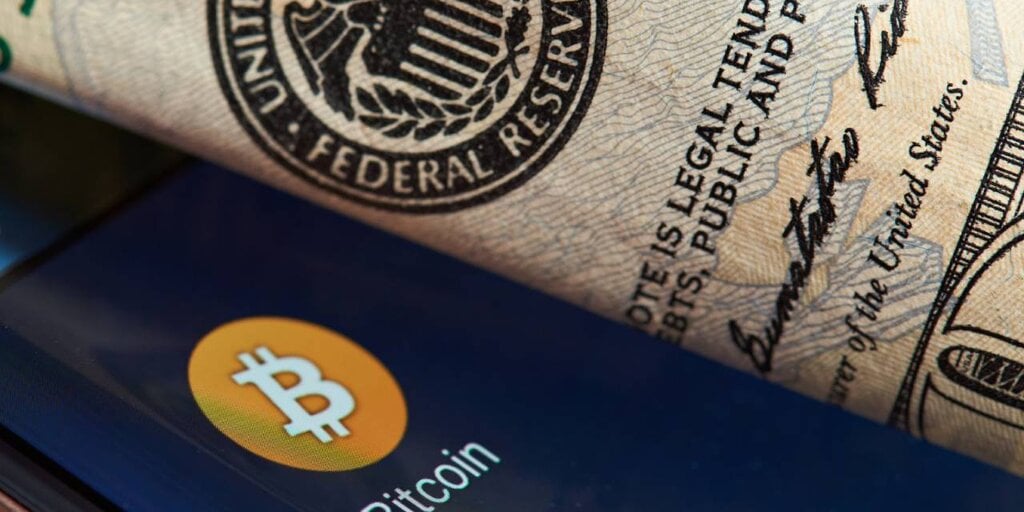Now that the Bitcoin ETF hype is gone, the price trajectory of the leading crypto asset is back in the hands of the Federal Reserve, new analysis suggests.
European digital asset manager CoinShares said in a report on Friday that Bitcoin price movements appear to be once again being driven by broader interest rate discussions.
“A closer look at the past 40 trading days reveals an increasing degree of alignment with June rate expectations,” said James Butterfill, head of research at CoinShares. “A similar trend was observed in 2023.”
According to CME Fedwatch, the market appears confident that interest rates will remain flat in June and may only fall in the fourth quarter of this year.
Core PCE inflation, the Fed's preferred measure of inflation that excludes food and fuel, has been much more resilient than expected over the past few months, holding steady at 2.8% in March. On the contrary, the GDP growth figures turned out to be underwhelming, recording 1.6% in the first quarter of 2024 compared to 3.4% in the previous quarter.
The data also shows that growth in manufacturing and services has contracted and stalled, respectively.
These indicators are fueling fears of stagflation and raising expectations that the central bank will keep interest rates high for an extended period of time. In response, CoinShares explains that the price of Bitcoin has fallen below $57,000 heading into the next Fed meeting on May 1st.
However, the central bank also announced a dovish surprise: it plans to keep interest rates above 5.25% while tapering quantitative tightening (QT). This would mean cutting its balance sheet by $25 billion per month from the previous $60 billion per month, slowing the rate at which it shrinks the economy's dollar supply.
In theory, this is good for Bitcoin and other risk assets that have historically thrived in an easy money macro environment. Immediately after the Fed's announcement, the price of Bitcoin soared above $60,000.
“Maintaining a high front-end rate while simultaneously tapering QT can be compared to braking a car and accelerating at the same time,” Butterfill writes. He added that the U.S. Treasury may be reaching the limit of its ability to service short-term debt, and the only option left is a change in the Fed's QT strategy.
Butterfill expects the Fed to cut interest rates later this year in response to weak economic data, and that the cuts will likely be “slower but larger than expected.”
He added: “Bitcoin's supply is fixed and highly immutable, so this turbulent situation is likely to support Bitcoin prices if the Fed ultimately cuts rates.”
Edited by Ryan Ozawa.

